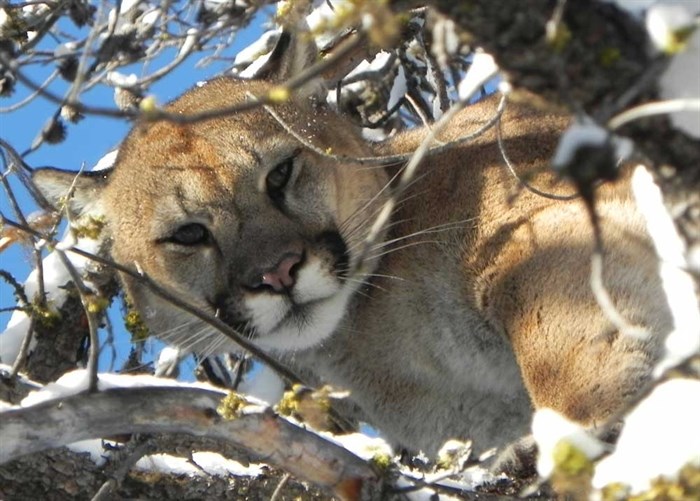
Image Credit: Wildsafe BC
October 22, 2015 - 2:30 PM
KAMLOOPS – There have been four unconfirmed sightings of cougars in Kamloops within just as many days, but Conservation officer Kevin Van Damme wants to stress these sightings are just that — unconfirmed.
“Five to seven times out of ten, sightings turn out to be something other than a cougar,” he says, adding of the 5,000 or so calls the B.C. Conservation Service receives every year about the big cats, anywhere from 50 to 100 are to the Kamloops office.
Van Damme says people have mistaken bobcats and coyotes, or even large dogs and cats for cougars.
According to Wildsafe B.C., a male cougar can weigh over 100 kilograms or roughly 220 lbs and a female ranges between 60 to 80 kg. By comparison, a mature coyote can be a tenth of the size ranging from 10 to 20 kg.
A cougar is light brown or tan in colour and can easily be identified by its compact head and muscular, black-tipped tail.
Wildsafe says a tell-tale sign of a cougar is the size and distinction of their tracks. Cougar tracks are wide, padded paw prints without claw marks. Other animals, like coyotes or wolves, leave claw marks.
While people often mix up their wildlife, Van Damme says there are roughly five cougars known to conservation that live in and around Kamloops.
“Most typically a cougar will move through the green belts of the city,” he says.
Of the recent unconfirmed cougar sightings, two were in Brocklehurst near the airport while another was seen near Sun Rivers on Shuswap Road. The fourth sighting doesn't have a location associated with it.
“These animals coexist with us, they’re not moving into town or targeting people,” Van Damme says. “It is extremely rare that a cougar would hurt a person.”
The cougars that cause trouble tend to be the young ones.
“Typically we see conflicts with dispersing juveniles just old enough to leave their mothers and go out on their own," he says.
There are more daytime sightings of the young cougars because typically nocternal animals are searching for their own space. Residents with cats or small dogs need to keep them in doors at night.
If you ever encounter a cougar pick up small children or dogs — and most importantly — remain calm.
“It is fast movement - turning and running and acting like a prey animal that will trigger (the cougar),” Van Damme explains. “In a calm, assertive voice… call out to the cougar and slowly move into safe area; maintain eye contact.”
He says cougars are assessors and will evaluate a situation before deciding what to do. They know humans stand on two legs and are usually uninterested.
To contact a reporter for this story, email Dana Reynolds at dreynolds@infonews.ca or call 250-819-6089. To contact an editor, email mjones@infonews.ca or call 250-718-2724.
News from © iNFOnews, 2015